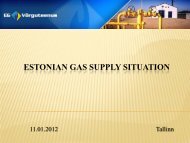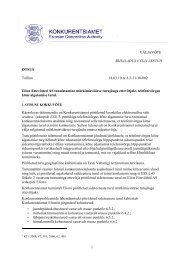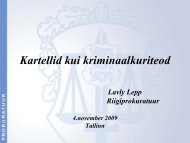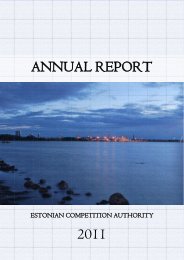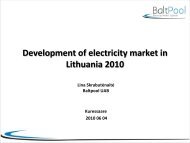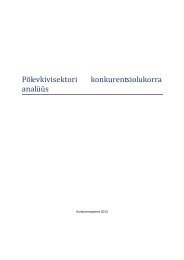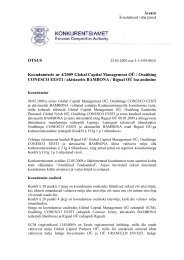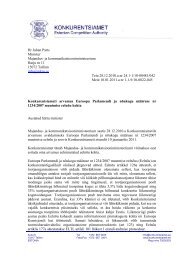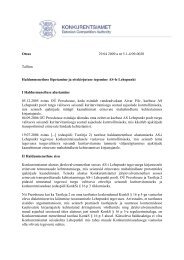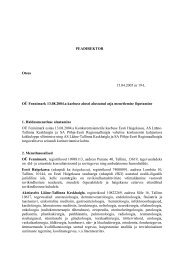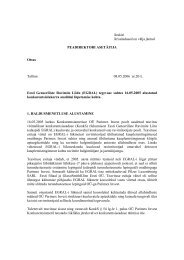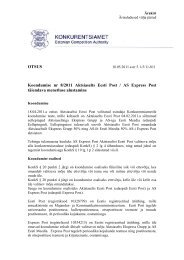ANNUAL REPORT 2010 - Konkurentsiamet
ANNUAL REPORT 2010 - Konkurentsiamet
ANNUAL REPORT 2010 - Konkurentsiamet
You also want an ePaper? Increase the reach of your titles
YUMPU automatically turns print PDFs into web optimized ePapers that Google loves.
support specified in the Electricity Market Act §59. Although the fulfilment of objectives set<br />
in the “Development Plan of the Estonian Electricity Sector until 2018” is important, the<br />
consumers would still expect to fulfil the mentioned objectives with reasonable costs,<br />
thereby not incurring any groundless economic burden. The support system based on the<br />
Electricity Market Act does not guarantee the fulfilment of legal expectations of the<br />
consumers, as the support will ensure an unreasonably high profit to some producers and<br />
unreasonable expenses for the consumers. Another essential disadvantage of the existing<br />
scheme is the fact that the paid support does not take into account the actual market price of<br />
electricity and the higher the market price, the higher the profitability will be of the<br />
producer. The Competition Authority submitted the summary of the analysis to the<br />
Minister of Economic Affairs and Communications, and also made the proposal that the<br />
established support scheme is not sustainable in a longer perspective from the point of view<br />
of the electricity market and the support rates specified in the Electricity Market Act § 59<br />
should be revised, correcting them in accordance with the actual situation. The proposal<br />
was driven by the intention to improve the competitive situation on the Estonian electricity<br />
market and reduce the unreasonably high economic burden of the electricity consumers.<br />
Control of Concentrations<br />
For the market economy to operate optimally, there exist certain rules in the competition<br />
law, which enable to preserve effective competition in a goods market through the<br />
control of concentrations. In the last year the number of concentrations between<br />
undertakings has decreased significantly.<br />
In <strong>2010</strong>, 10 notices of concentration were submitted to the Competition Authority, and 1<br />
case was brought over from 2009. Thus the Authority proceeded with 11 cases and made 10<br />
decisions to grant permission to concentration. In one case the proceedings and decision<br />
were postponed until 2011. All 10 decisions to grant permission to concentration were made<br />
in the first phase of the proceedings, i.e. during the 30 calendar days prescribed by law; in<br />
three cases the proceedings were suspended due to the requirement to eliminate the<br />
deficiencies contained in a notice of concentration. The actual average length of proceedings<br />
of the first phase was 18 days.<br />
31



